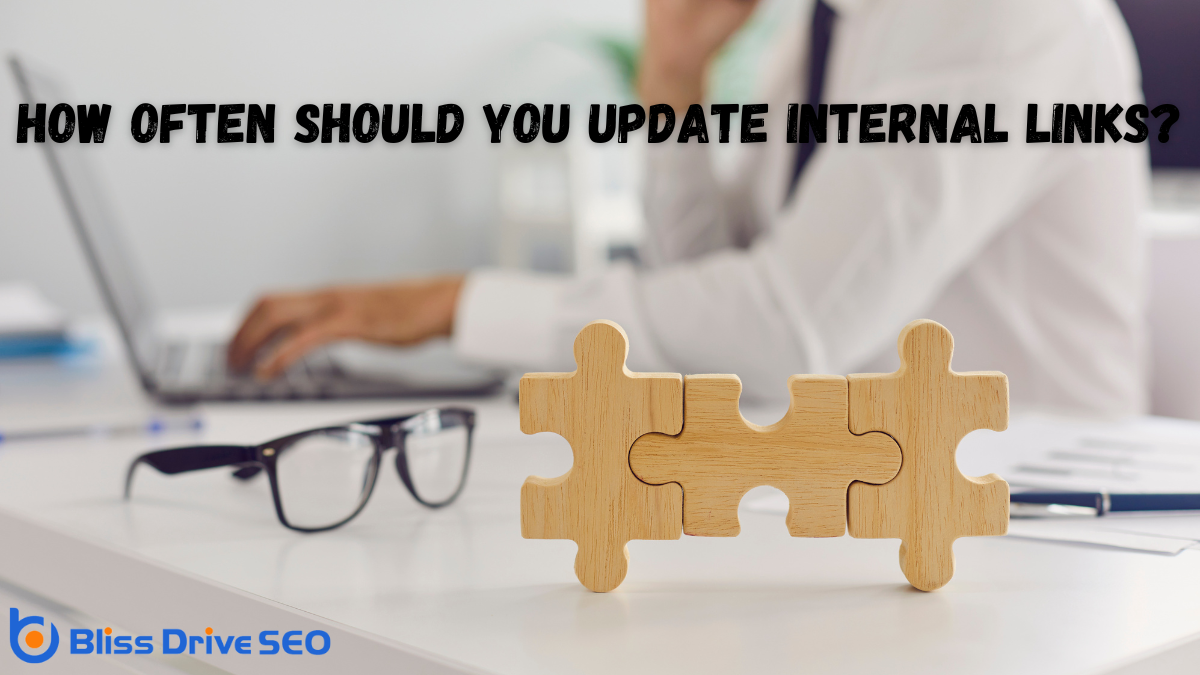Digital Marketing Services
Learn More About Us

Have you ever wondered how often you should update your website's internal links to keep everything running smoothly? You're not alone. Regular updates guarantee your site remains user-friendly and search engine optimized. But how do you determine the ideal frequency for these updates? Explore the factors shaping this decision to enhance your site's performance and keep visitors engaged.
Although often overlooked, internal links play an essential role in enhancing your website's navigation and SEO. When you strategically place internal links, you guide your visitors through your site, making it easier for them to find relevant content.
This seamless navigation keeps users engaged, reducing bounce rates and increasing time spent on your site. In addition, internal links help search engines understand your site's structure and content hierarchy. By linking related pages, you're signaling to search engines which pages are most important, potentially boosting their rankingsThe position at which a website appears in the SERP..
Additionally, internal links distribute "link juice," or SEO value, throughout your site, strengthening less prominent pages. Embrace internal linking as a tool to enhance user experience and improve your site's overall search engine performance.

Internal links are vital for guiding users and search engines through your site, but how often should you update them?
You should revisit your internal links whenever there are significant changes to your website or content. If you consistently add new pages, blog posts, or update existing content, it's important to guarantee your internal links reflect these changes. This helps maintain a logical flow and keeps your site relevant.
By frequently analyzing your website's structure, you can identify outdated or broken links that might hinder both user experience and search engine rankings. Regularly updating links strengthens your site's SEO and aids in distributing link equity.
How well do you understand your users' behavior and how they navigate your site? To enhance your internal linking strategy, start by analyzing user behavior through analytics tools.
Identify pages that attract the most attention and those that users quickly abandon. Pay attention to users' navigation paths to see if they're finding content effortlessly or hitting roadblocks. Tools like heatmaps can show where users click most often, highlighting potential areas for optimizing links.
Regularly evaluating this behavior lets you adjust internal links to guide users to valuable content efficiently. Don't hesitate to test different link placementsSpecific websites or locations within websites where ads can appear. and structures.
Staying on top of search engine algorithm updates is vital for maintaining an effective internal linking strategy. Algorithms constantly evolve, impacting how search engines rank pages and evaluate links. When changes occur, they can affect your site's visibility, making it imperative to adapt your internal links accordingly.
By keeping an eye on updates from Google and other search engines, you can guarantee your linking strategy aligns with current best practices. You don't need to become an SEO expert, but following credible SEO blogs and forums can help you stay informed.
Pay attention to official announcements and industry insights. This way, you'll understand how updates might influence your site's performance and internal linking. Adapting promptly will help maintain or even boost your site's search rankings.

To keep your internal linking strategy effective, it's crucial to establish a regular review schedule. By doing so, you guarantee your links remain relevant and beneficial for both users and search engines.
Start by setting a specific time frame that suits your site's needs. Whether it's monthly or quarterly, consistency is key. Keep an eye on content performanceMeasuring how well content achieves its intended goals. and adjust links accordingly, helping you maintain ideal site navigation.
Here are some steps to follow:
To keep your website in top shape, make it a habit to update internal links regularly—ideally every month or quarter. By doing this, you'll guarantee your links are relevant and align with new content, updates, and shifts in user behavior. Regular reviews help enhance navigation, boost SEO performance, and maintain a positive user experience. Don't forget to track and fix outdated or broken links to effectively distribute link equity across your site. Keep your site seamless and user-friendly!
